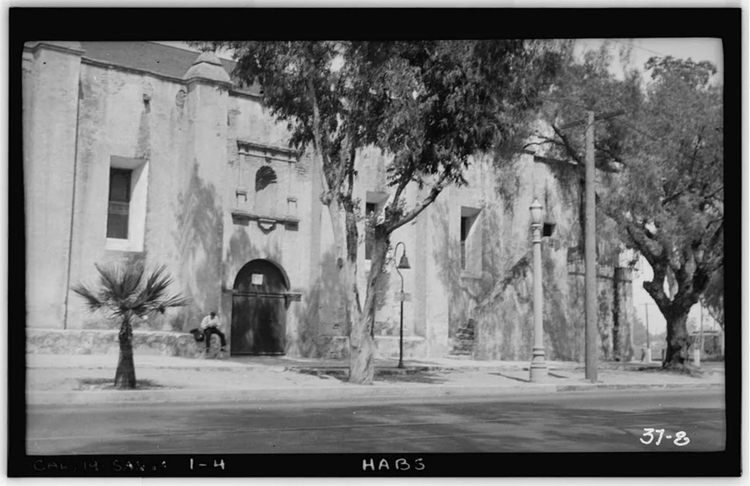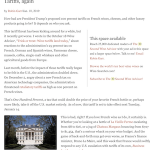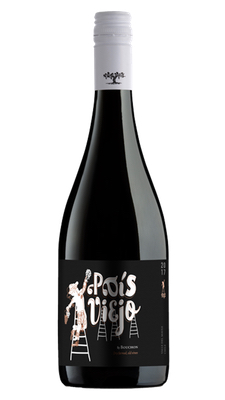You’ve probably heard of the Mission grape, but chances are that you’ve heard just enough that you try to avoid wines made from it.
Notes for you
• The 30 Wine Advisor is a reader-supported online community. If you enjoy these reports, please consider a paid subscription. You’ll get twice as many reports, and you’ll help keep us going! Don’t worry, though. Our basic biweekly edition will always be free.
• Food and wine books you’ll like
• Today’s tasting report: J. Bouchon 2022 Pais Viejo
Why the aversion? Simple enough: Mission is the first vitis vinifera grape planted in the Americas, but it has been cultivated for quantity, not style.
A sturdy, hardy variety that thrives and bears productively even in the hot, arid conditions that prevail through much of Spanish America, Mission came with the missionaries who followed Spain’s colonizing conquistadores to the New World some 500 years ago. They planted the grape at Spanish missions – hence the name – along America’s Pacific coast from Chile through Mexico to California.
Intending the grape for sacramental wine, the missionaries were more concerned about quantity and reliable crops than making wine enthusiasts swoon. The variety thrived, and it followed the colonizers as they cut their swath through indigenous America: Hernan Cortes in Mexico and Junipero Serra in California, whose names we learned in high school.

Mission San Gabriel Arcángel, Historic American Buildings Survey Photographed by Frederick Scholer April 14th, 1934. From the Wine History Project of San Luis Obispo County, California
Before long, Mission – often vinified as a sweet wine – was California’s most widely planted and productive grape, and it remained so until the 1880s, when the phylloxera louse ravaged Europe’s vineyards, prompting American vine growers to rip out the Mission vines and start planting Cabernet Sauvignon, Merlot, Chardonnay, and other French grapes considered more sophisticated in their place.
Then Prohibition arrived in the U.S. in the early 20th century, virtually spelling an end to the Mission grape in this country. It survived only in scattered old vineyards and to some extent as an inexpensive, anonymous ingredient in cheap jug wine blends.
The quality of table wine made from Mission grapes has not often been high, according to Wine-Searcher’s report on the variety. “It has low acid, high sugar, weak color, and bountiful yields that produce little concentration. When other vinifera varieties started arriving in California, Mission faced stiff competition, especially when fashions shifted away from very sweet table wines.”
In Chile, however, where the grape is known as Pais, it enjoyed a better fate. It joins Cabernet Sauvignon among the nation’s most-planted varieties. But in contrast with Chilean Cabernet, which flows to the U.S. in a virtual river, Chile’s Pais crop mostly remains there as an ingredient in bulk wine.
But that’s changing now, with respected producers like Chile’s Bouchon, a fourth-generation winery, turning to Pais as the base for wines of real quality and value like today’s featured J. Bouchon 2022 Maule Valley Pais Viejo.
Grown in Bouchon’s Mingre estate in the Maule Valley’s arid Secano Interior region, this wine is dry-farmed without irrigation on century-old Pais vines. The winery describes it as “red and rustic … an honest wine that rescues Chile’s past.” It’s fresh and clean, with a remarkable mixed-fruit aroma and balanced flavor that gets your attention. I like it a lot, and I think you will, too.
Today’s Tasting Report
Bouchon 2022 Pais Viejo Maule Valley Chile Pais ($14.99)
Lift up a glass of light cherry color J. Bouchon Pais Viejo from Chile’s Maule Valley and enjoy a scent of mixed fruit so fresh that it evokes an image of summer produce stands: Raspberry, strawberry, a hint of apple, a tart whiff of cranberry. Fresh ripe fruit mirrors the nose in an appealing if rustic flavor framed by zippy acidity. Just a hint of earthy minerality shows in a long finish, with modest 12% alcohol staying out of the way. U.S. importer: Vine Connections, Sausalito, Calif. (Jan. 24, 2024)
FOOD MATCH: The importer suggests that this wine pairs well with pasta and fish or as an aperitif. I’d go along with the fish, maybe, if we’re talking stronger, oily fish like salmon or mackerel.
WHEN TO DRINK: This is a wine to drink up. The 2022 vintage is relatively new in the market, but look for the youngest vintage you can find.
VALUE:
Wine-Searcher.com’s $15 average U.S. retail matches my local tab. It’s a fair price for a refreshing, fun quaff that scores well on enjoyment points and goes well with food.
WEB LINK:
Here’s an informative link from importer Vine Connections.
Read more about the wine in English or Spanish at this link from producer J. Bouchon.
FIND THIS WINE ONLINE:
Check prices and find vendors for J. Bouchon Pais Viejo on Wine-Searcher.com.
Read more about the historic Pais (Mission) grape variety at this Wine-Searcher link, where you can browse dozens of other Pais wines and vendors.
Follow this Wine-Searcher link for more about Chile’s Maule Valley and other wines of the region.
Wine Focus January 2024
Wines for Comfort Food
Welcome to the 2024 Wine Focus series. This year we will be trying different sorts of themes, rather than pinning ourselves to a single grape/region each month. Our topic for January 2024 is Wines for Comfort Food.
January is (in the northern hemisphere) a month where lots of folks hunker down, and make foods that keep the hearth and heart warm. It’s a time where those bigger, richer wines find an easier place at the table to accompany braises, stews and hearty soups. In addition to the drinking part, it will be interesting to know what people are eating. What did you serve to accompany that mature Syrah or rich Cabernet.
Grab a glass, as well as a fork and knife, and let’s tuck in to Wines for Comfort Food.
Find the wines you want
Explore Wine-Searcher
Wine-Searcher.com is the place to go online if you want to find where to buy a particular wine that interests you. What’s more, Wine-Searcher.com offers so much more. It’s well worth a visit just to discover its many features, including its popular list of the world’s Top 10 Best Value Wines.
Good wines we’ve tried under $10.99!
Want tips to still more good, inexpensive wines? Here are Wine-Searcher links to vendors and prices for a bunch more wines for $10.99 or less that I’ve told you about in recent years. In some cases the prices may have risen over the $10.99 mark since I reviewed them, but they should still be excellent bargains. Please tell us about your favorites!
- Santa Cristina Toscana
- Santa Marina Toscana Rosso
- Famille Perrin Ventoux La Vielle Ferme
- Boutinot “Uva Non Grata” Vin de France Gamay ($9.99)
- Laroque Cité de Carcassonne ($10.99)
- Famille Perrin 2019 “La Vielle Ferme” Rouge ($7.99)
- Querceto 2019 Chianti ($10.99)
- Porto Kopke Fine Ruby and Tawny Port ($9.99/375ml)
- La Fiera 2016 Montepulciano d’Abruzzo ($8.99)
- La Vieille Ferme Vin de France Rosé ($8.99)
- La Fiera Montepulciano d’Abruzzo ($8.99)
Sponsor the Wine Advisor.

Support The 30 Second Wine Advisor and help us pay the rent while reaching 25,000 dedicated readers with your sponsorship message in this space, at the top of this E-letter, and on our social media. If you’re an established business in wine, food, and similar ventures, there’s no better way to focus your message toward an audience that comes here for just those topics. See our Sponsorship Page, or email Robin Garr for more information.
Wine Forum and Social Media
You’re always welcome to drop by our WineLovers Discussion Group, the Internet’s first and most civil online community. Discussions are open for public viewing, but you must register to post. To request registration, please contact me at wine@wineloverspage.com, tell me your name, mention the Wine Advisor, and briefly say why you’d like to participate in the forum. Sorry about the minor red tape, but this is our simple, low-tech way to deter spammers and bots.
I’d also be delighted to have you visit and “like” our WineLovers Facebook Page.





